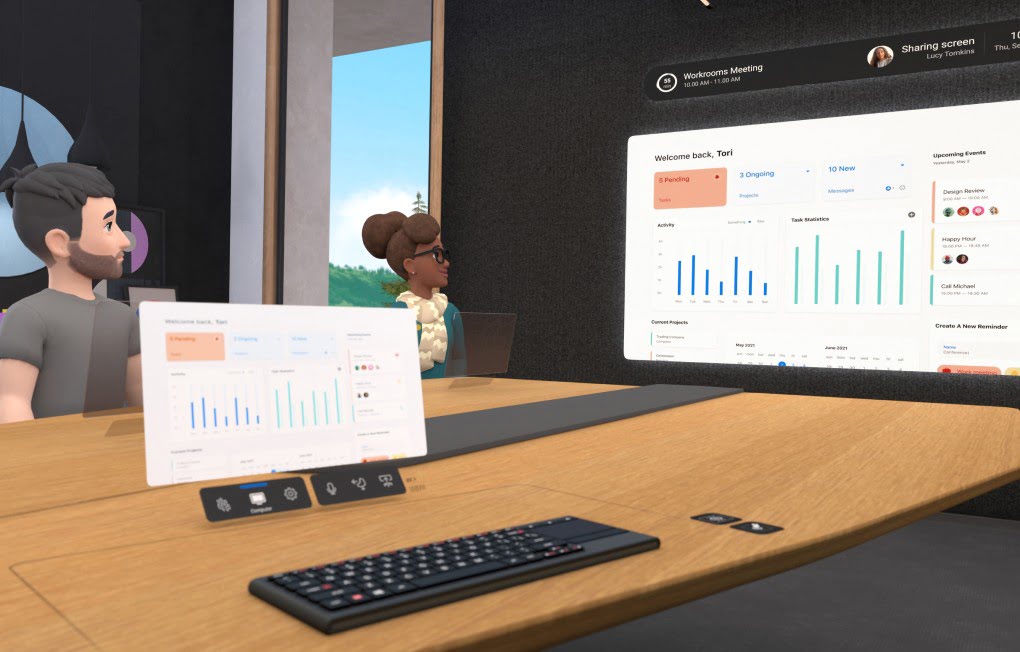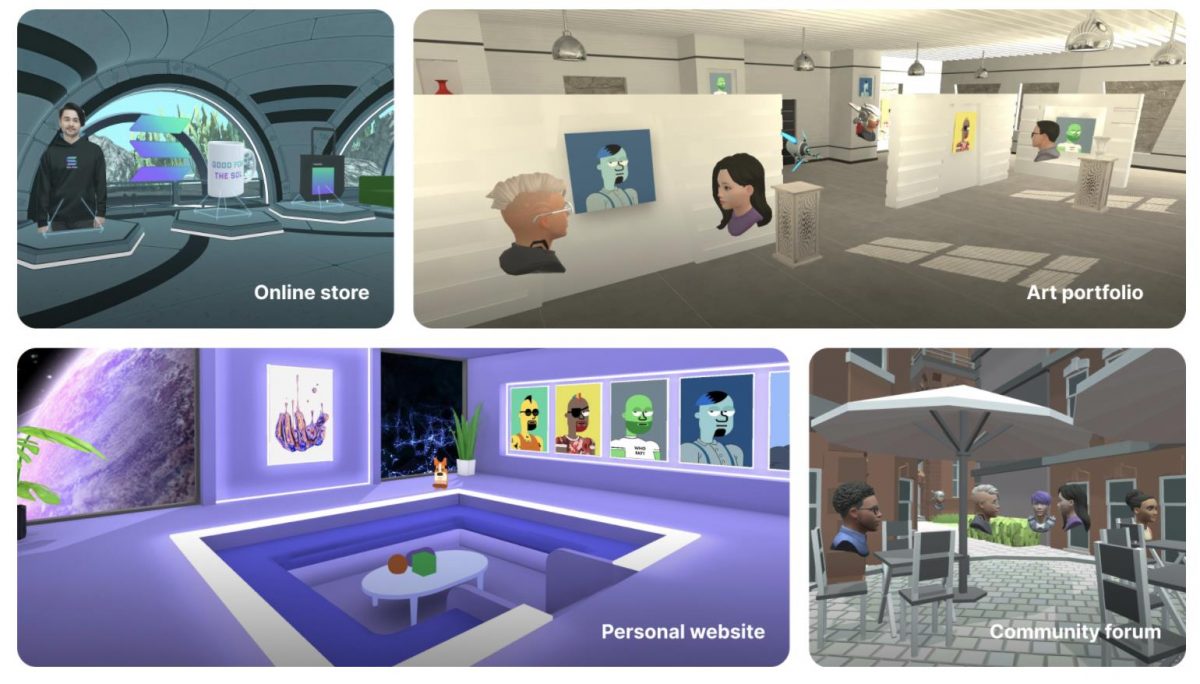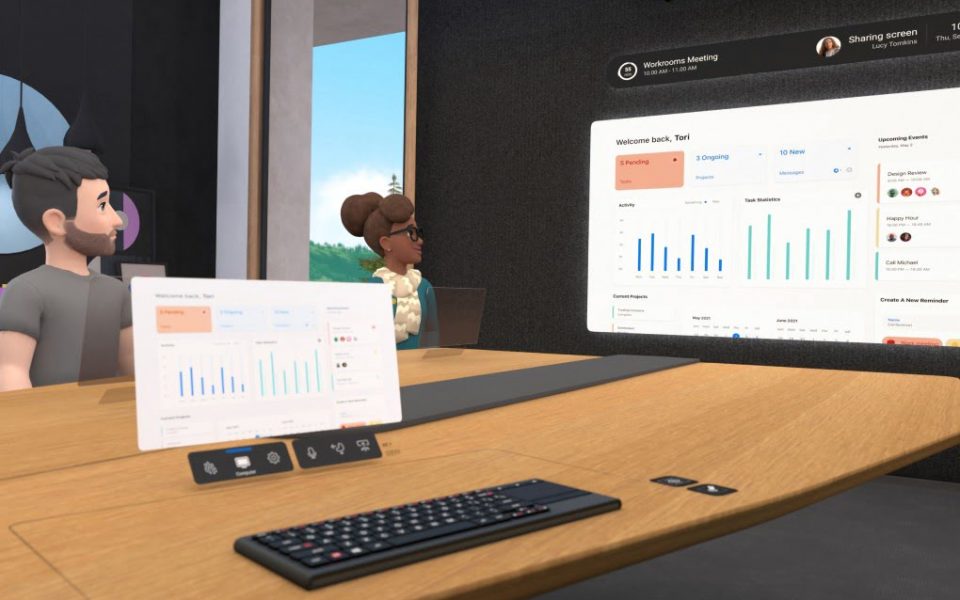How Will Businesses Really Use Web3? Organizational Culture in the Metaverse
Business has not been “as usual” for the past few years now. The pandemic drastically changed the way many of us participate in our workplaces and has effectively reshaped the entire U.S. job market. The fact is, the vast majority of employees who can do their jobs from home are doing so. And in lew of face-to-face meetings, virtual offices are quickly gaining popularity.
But we’re not just talking about video calls and Zoom happy hours. Metaverse jobs are here – from software engineering roles to making sandwiches at a metaverse Subway. Even established, non-digitally native businesses are looking to become involved in the Web3 ecosystem and onboard their employees along the way.
The metaverse isn’t just a game anymore. Here’s why.

The metaverse is more than NFTs and VR games
Right now, it seems like everyone is talking about the metaverse. The term skyrocketed in popularity last fall when Facebook changed its name to Meta. Since then, many have taken an interest in what the “metaverse” actually entails. Some are even finding it within their interests to secure a bit of virtual real estate.
The concept of the metaverse has been around for decades, but its recent resurgence is no random event. Just as blockchain tech (especially NFTs) has taken off over the past year, so too has the contemporary idea of living a fully digitized life.
Currently, the most established use-cases of metaverse technology are centered around either NFTs or gaming. Platforms like Decentraland, Cryptovoxels, and The Sandbox continue to incentivize users to build virtual dwellings, display and trade NFTs, and just generally engage in their gamified ecosystems.
Google’s Tilt Brush is a perfect example of how metaverse tech has helped expand the NFT ecosystem. Created to be a virtual version of a fully equipped painter’s studio, Tilt has become the livelihood of artists like Anna Zhilyaeva and Aimi Sekiguchi — who use the software to create immersive NFTs that often fetch a hefty sum.
We’ve even seen a multitude of NFT art galleries built in the metaverse, with Sotheby’s possibly taking the cake for the virtual version of their London headquarters. And institutions arent the only ones being incentivized to create galleries, as companies like OnCyber are making it easy for collectors of all levels to showcase their NFTs in the metaverse.

But what is the real utility of blockchain-based gaming? Is that all there is to the metaverse? Of course not. While these games are fun (no seriously, go mess around on Decentraland, it’s great), the real incentive of entering the metaverse is that it opens up a new avenue for interpersonal connections.
With open-world metaverse games, we’re able to meet a wide variety of people from the comfort of our homes. And these interactions have evolved far past the days of chat rooms and Omegle. With platforms like VR Chat and Meta’s Horizon Worlds, users can come face-to-face with people from all over the world.
Thanks to the early adopters of these virtual technologies, and the developers that have iterated on them, non-digitally native businesses can easily get involved in the metaverse.
Even your team could have meetings in the metaverse
It shouldn’t be surprising that there’s a market for enterprise-level solutions for organizational culture. I mean, we’ve all been begrudgingly hosting our meetings via Zoom or Google Meet since 2020. The need to improve upon these tools, and use technology to make remote work less isolating is evident.
Companies like Microsoft, Meta, and more are aiming to lead the pack when it comes to these solutions. Especially when it comes to taking aspects of the metaverse – open-world games, custom avatar creation, and VR capability – and adapting them for business
In the coming years, platforms like Meta’s Horizon Workrooms and Microsoft Mesh could make switching to a fully-remote work model more appealing to both employers and employees. Other companies aren’t far behind in their efforts to provide an alternative to the many developing Fortune 500 tech company-led solutions.
Rove, for one, is possibly one of the best business-focused metaverse platforms currently available. Aimed at expanding what’s possible in the metaverse, this new free-to-access metaverse project is providing use-cases that place importance on that aforementioned interpersonal connection.
With Rove, the metaverse can feel like a happy medium between fun and utilitarian. For artists wanting to create a 3D website/storefront for their products, users hoping to customize a virtual hangout space, and of course businesses looking for a more casual Web3 way to hold meetings, Rove has solutions.

Imagine, instead of staring at name cards and frozen screens in a 10+ person video meeting, your entire team can don their own custom avatars, show up to a lounge area and flip on a virtual projector for a presentation. In Rove, all of this is possible. Users can even dress the office walls with the latest NFTs they’ve picked up – no coding skills necessary.
This line between the corporate and casual metaverse may very well be the gateway for businesses to become interested in fostering a Web3 organizational culture. And it seems even the newer players entering into the metaverse race understand this: that the interactive and accessible components of the metaverse are likely its biggest selling points.
Functionality that inspires creativity and vice versa. This seems to be the goal of many metaverse companies, possibly best exemplified by vSpace — an extended reality platform that features 3D video conferencing with a sort of plug-and-play nature. With Twitch, Vimeo, and YouTube integration all in one, the business tool focused on interpersonal connection almost feels like a game.
The metaverse is anything but static
With each passing month, facets of everyday life are being integrated into the metaverse. Use-cases are growing rapidly, and just as quickly as gaming led to businesses getting involved, so too will Microsoft, Meta, Rove and the like help open the doors to the next big iteration.
The metaverse should be for everyone. Sure, it can be confusing, but the metaverse is here and it doesn’t just have to be an individualized experience anymore.
It’s unlikely that we’ll see companies begin to incentivize their entire workforces to show up virtually for a full 40-hour workweek anytime soon (well…unless you’re ZOAN). But now, onboarding your team into the metaverse can be as easy as scheduling a meeting.
The post How Will Businesses Really Use Web3? Organizational Culture in the Metaverse appeared first on nft now.

